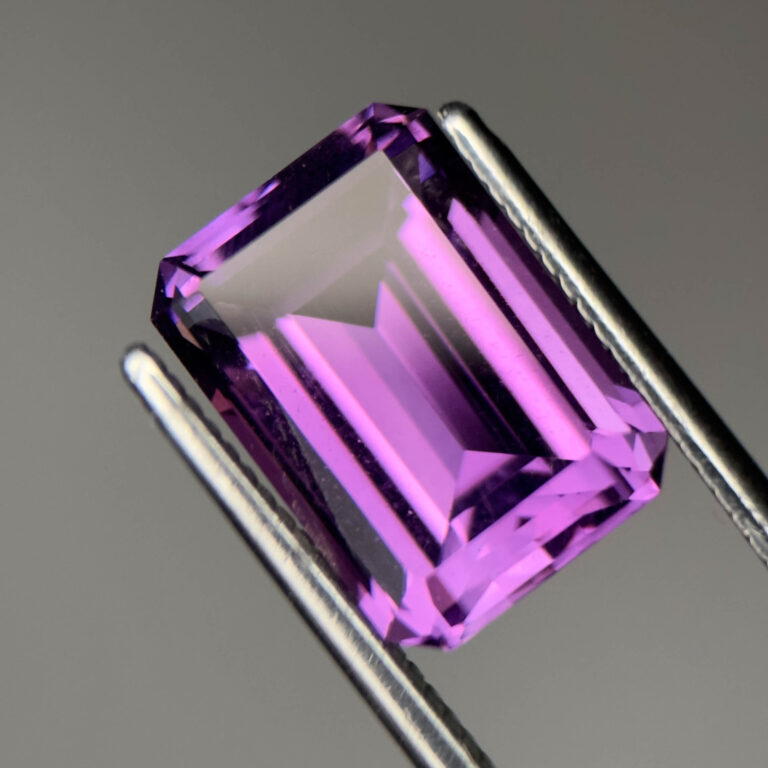Everything You Need to Know About the Oval Cut
The oval cut combines the sparkle of a round with a refined elongation that sets it apart. From diamonds to sapphires, this shape offers versatility, elegance, and in many cases, better value for size. Yet, choosing the right oval demands attention to proportions, cutting quality, and subtle optical effects that can make or break a stone’s beauty.
A Brief History of the Oval Cut
Oval-shaped diamonds and gemstones have appeared for centuries, but the modern oval brilliant cut was developed in 1957 by master cutter Lazare Kaplan. His design kept the 57–58 facets of a round brilliant while extending the outline for an elegant, elongated look.
By the late 20th century, ovals saw renewed attention, and in the 2010s–2020s, they surged again, driven by celebrity engagement rings and a desire for “classic with a twist.” Princess Diana’s oval blue sapphire (now worn by the Princess of Wales) remains the most famous colored oval in history, inspiring countless replicas. Today, ovals are a staple not just in diamonds but in a wide range of colored gems.
Why Choose an Oval Cut
- Larger face-up appearance: An oval often looks bigger than a round of the same carat weight because its surface area is spread lengthwise. For diamonds, a 1 ct oval can appear up to 10% larger face-up than a 1 ct round (Rapaport, 2023).
- Finger-flattering shape: The elongation can create a subtle illusion of longer, slimmer fingers.
- No sharp points: Unlike marquise or princess cuts, ovals have rounded ends, reducing the risk of chipping.
- Sparkle and fire: Most oval diamonds and many colored gems are faceted in the brilliant style, offering brightness close to that of a round.
- Better value in many cases: Fancy shapes like ovals usually cost less per carat than rounds of similar quality, though top-tier ovals with excellent proportions and minimal bow-tie can match round prices.
Common Challenges and Flaws
Bow-Tie Effect
Most faceted ovals show some degree of a bow-tie — a dark, bow-shaped shadow across the center caused by light leakage. In a well-cut stone, it’s faint and only visible at certain angles. In a poorly cut one, it dominates the face.
Windowing
More common in colored gemstones than in diamonds, “windowing” happens when a stone is cut too shallow, creating a transparent, lifeless area in the center. Many native-cut stones, particularly high-volume overseas cuts, are shaped this way to preserve weight. A quality oval should return light evenly across the entire face.
Shape and Proportion
The length-to-width ratio (L/W) defines the oval’s silhouette.
- 1.3–1.5: classic, balanced look
- Below 1.3: too round
- Above 1.6: overly elongated, may risk windowing
Avoid overly bulging shoulders or flat sides — both can disrupt symmetry and waste weight.
Matching Stones
Ovals vary in outline, making it difficult to find perfectly matched pairs for earrings or eternity bands. Consistency in proportion, color, and face-up size is crucial, and achieving it often requires sorting through many stones.
Best Gemstones for Oval Cuts
Diamonds
A perennial favorite for engagement rings. Ovals offer brilliance, elegance, and — on average — a 10–30% lower price per carat than rounds (Rapaport, 2023). The best examples combine minimal bow-tie with excellent light return.
Sapphires and Rubies
Corundum crystals are naturally elongated, making ovals a logical choice. They showcase color well and retain more weight from the rough. Fine cutting — often seen from Sri Lankan workshops — ensures even color and brilliance without windowing.
Emeralds
While traditionally step-cut, brilliant-style oval emeralds can display more sparkle if clarity is high. Avoid overly shallow cuts that sacrifice brilliance.
Spinels and Garnets
Both respond well to oval cutting, showing saturated color across the broad face. Red and pink spinels, or rhodolite and tsavorite garnets, are striking in this shape.
Tourmaline, Topaz, Quartz, Zircon
Prismatic crystals like tourmaline lend themselves to ovals, maximizing size. Zircon’s high dispersion can be spectacular in an oval cut, though orientation affects double refraction.
Opals
Typically cut as oval cabochons, following tradition and the shape of the rough.
Moissanite and Lab-Grown Stones
Ovals are popular for moissanite and lab-grown diamonds, offering a big, bright look at a lower cost.
Price Considerations
- Diamonds: Ovals are usually priced below rounds of equal grade, but demand for premium-cut stones can narrow the gap.
- Colored gemstones: Shape has less direct impact on price than color, clarity, and origin, but fine round cuts are rarer and often cost more than ovals.
- Matched sets: Multiple ovals require careful matching, adding to the labor cost of settings like three-stone rings or eternity bands.
Buying Guide: How to Select a Quality Oval
- Face-up view: Assess bow-tie visibility; prefer stones where it’s faint and disappears at certain angles.
- Check for windowing: Place over text — if it’s clearly visible through the center, pass.
- Symmetry: Ends should mirror each other, sides should be even curves.
- Brilliance: Look for consistent sparkle across the stone.
- Color distribution: Avoid strong zoning; best stones show even saturation.
- Certification: For diamonds, insist on a GIA or equivalent report; for colored stones, origin/treatment reports are valuable.
- Compare stones: Side-by-side viewing quickly reveals the better performer.
- Setting choice: Prongs at the four “cardinal points” or a bezel offer security. Halos can enhance presence and reduce bow-tie visibility.
Final Thoughts
The oval cut bridges tradition and individuality. Its ability to maximize face-up size, flatter the hand, and adapt to nearly any gemstone makes it one of the most versatile choices in modern jewelry. Whether you’re choosing a diamond solitaire, a sapphire halo, or an opal cabochon, understanding proportion, cut quality, and optical effects will help you select an oval that truly shines.
